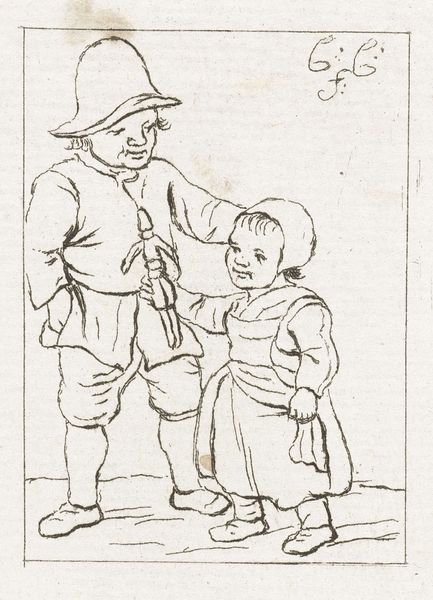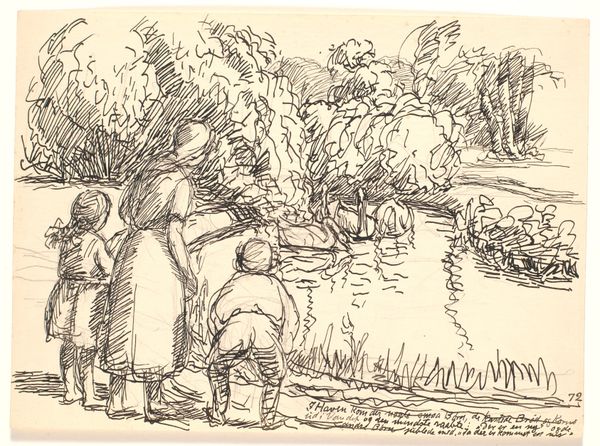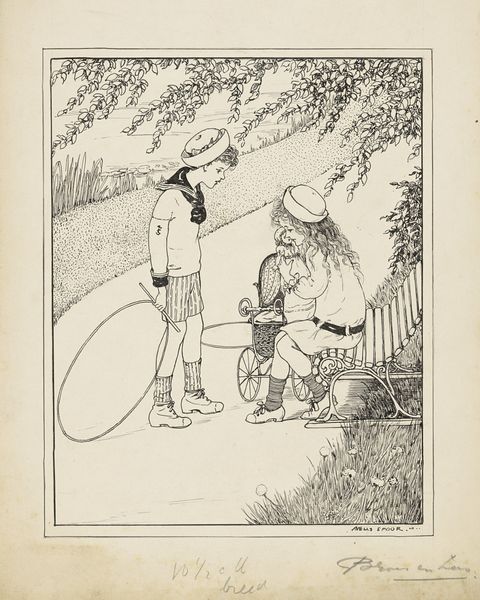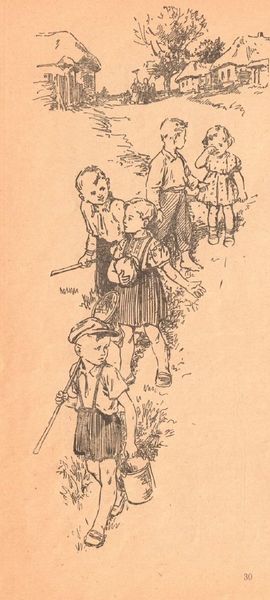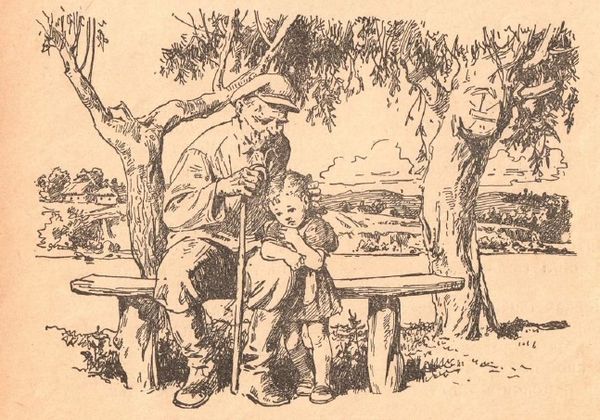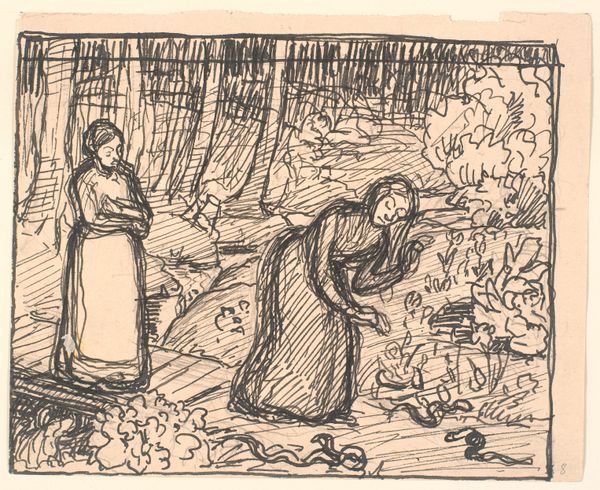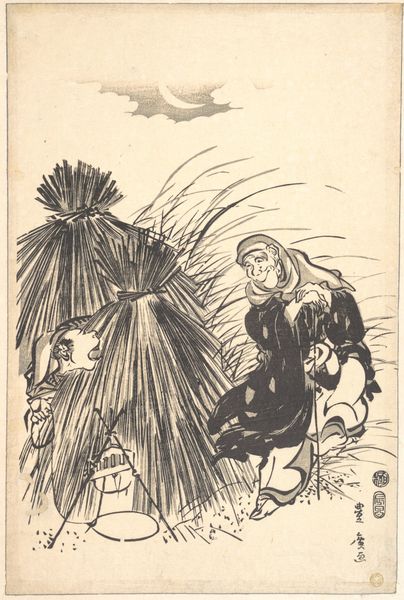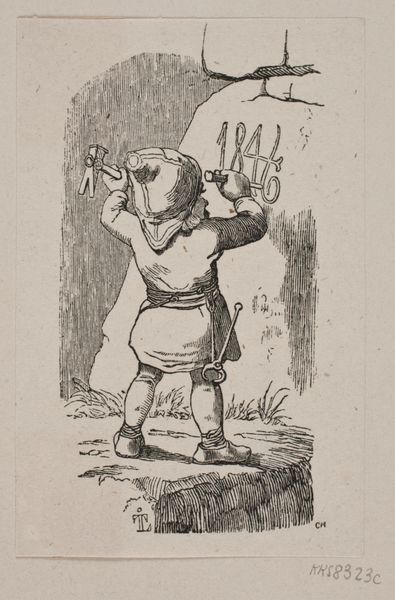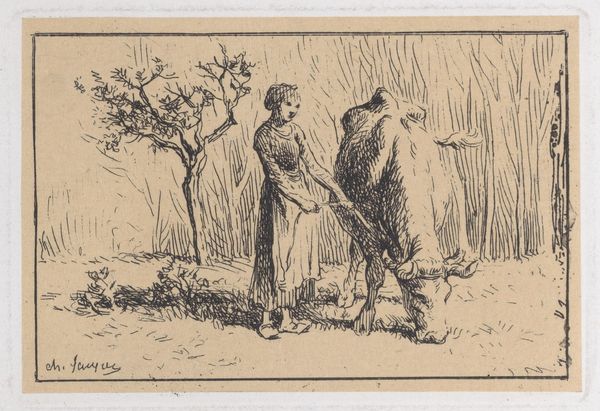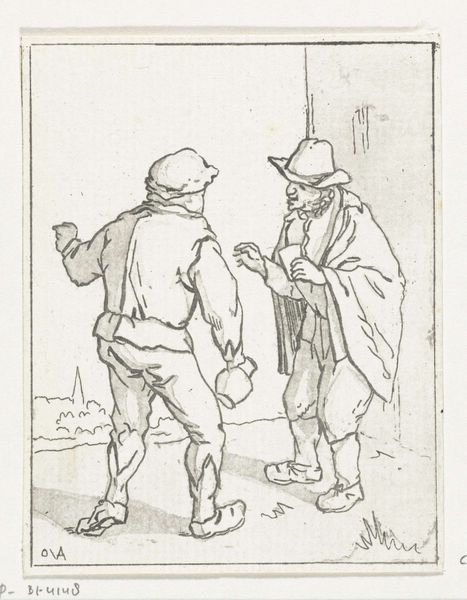
drawing
#
portrait
#
drawing
#
narrative-art
#
genre-painting
#
academic-art
Dimensions: 87 mm (height) x 127 mm (width) (bladmaal)
Editor: So, here we have Niels Skovgaard's "Drengen fra Vradinge," a drawing from 1906. It's a pretty simple composition: a boy talking to an older woman. The lines feel a little rough, like a quick sketch, but the expressions are really clear. What's your take on this, seeing as the medium is just lines on paper? Curator: Well, let's consider the materiality. It's "just lines on paper", yes, but think about the accessibility that implies. Pen and ink were relatively inexpensive, ubiquitous even, at the turn of the century. Skovgaard chooses this democratic medium to depict what appears to be a genre scene. Editor: So, not some fancy oil painting reserved for the elite, but something more everyday? How does that affect the social message? Curator: Precisely. Skovgaard elevates the everyday labor, the lives of ordinary people in Vradinge, using this easily reproducible medium. It bypasses the traditional channels of high art and allows for broader circulation. We might ask who would be looking at this drawing, and what assumptions or judgements might they bring based on the work's content and process. Editor: It's almost like he’s democratizing the act of artmaking just by the choice of materials. You’ve shifted my focus onto production itself rather than representation. Does knowing that Skovgaard comes from an artistic family also add context? Does their privileged experience allow them a degree of sentimental representation here, or would it grant additional critical perspective? Curator: That is an excellent point. Social and financial resources permit certain representational opportunities, and limit others. Skovgaard may be making choices informed as much by his resources as any narrative that develops through its materials. Considering both the context and the materials grants a richer, and perhaps even more challenging, understanding of what art can be. Editor: Thanks, it’s helpful to consider art as less of an image and more of an active participant in the economic landscape. Curator: Yes, understanding the intersection of materiality and social practice reshapes the artistic experience.
Comments
No comments
Be the first to comment and join the conversation on the ultimate creative platform.
